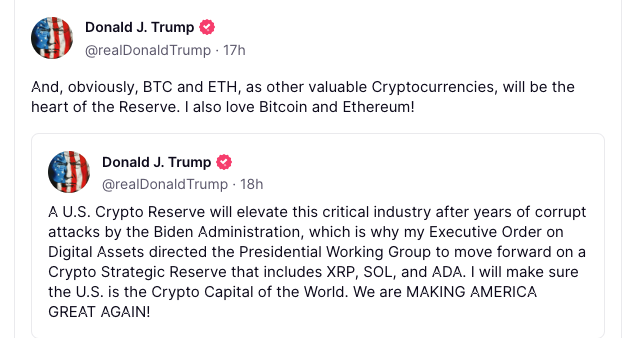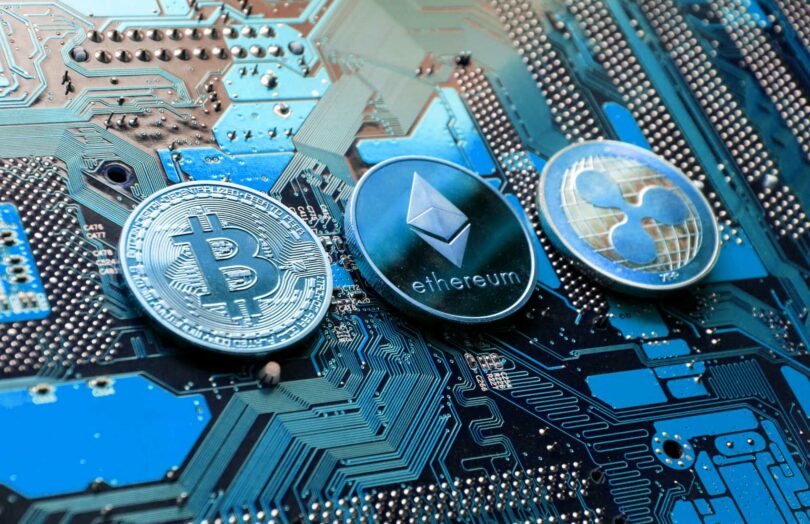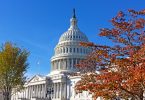Yesterday President Trump confirmed on his social network, Truth Social, that there will be a US crypto reserve, saying the coins it will invest in are XRP, ADA (Cardano) and SOL (Solana). That was followed by adding Bitcoin and Ethereum, presumably an oversight in the first message.

In an executive order during the first week of his current term, he said a working group would explore whether to create such a reserve, and the coins may come from asset seizures. The working group only convenes later this week as part of a White House Crypto Summit.
Since yesterday’s announcement, SOL is up 11%, XRP 14% and ADA 44%.
We’ll return to whether it’s appropriate to have a reserve in the first place.
While holders of the three coins are celebrating the massive bumps in prices, more serious crypto folk have reservations about whether it’s the role of a government to pick winners as well as this particular selection.
Coinbase CEO Brian Armstrong was the most diplomatic, suggesting that perhaps Bitcoin was enough. He made the logical proposal that if the investment goes beyond Bitcoin, then an unbiased portfolio would be based on relative market capitalization.
Castle Island Venture’s Nic Carter makes an interesting point:
Much like the surprise launch of the Trump meme coin, the selection of these coins by the President raises more questions than answers. Crypto czar David Sacks confirmed he no longer holds any crypto, presumably to fend off allegations of insider trading. In the meantime, crypto Twitter is busy highlighting bets taken out shortly before the announcement. It puts both the CFTC and SEC in awkward positions, but they have an obligation to check whether there were any such breaches by others.
Should there be a reserve at all?
Typically country’s keep reserves of scarce resources needed for use in productive endeavors. Like oil.
Bitcoin is not a productive asset.
Others argue that Bitcoin is more akin to gold, with US government holdings amounting to 8,133 tons, worth around $750 billion.
Here’s a related quote from Swiss digital asset bank Sygnum: “Such a measure would serve to fully legitimise Bitcoin, which is already widely regarded as a store of value and alternative to gold by a growing number of TradFi institutions.“
But plenty of pro crypto people don’t believe this an appropriate use of taxpayer money, including Palantir founder Joe Lonsdale who was an early Trump backer.
Given cryptocurrency’s roots are anti-government, it’s quite a turn of events that the government is now sought after as an investor to boost prices.
Nic Carter pointed out that a change in government could reverse any price benefit in a rather abrupt fashion. Plus, any material spending by the current administration could be unwound if it fails to get Congressional approval.
It’s also worth exploring which countries typically invest government assets in this fashion. Most of them fall into two camps.
First there are centrally controlled economies such as China, where the government controls stockpiles of assets as well as most of the biggest enterprises.
The second group are usually countries that have massive reserves, often in oil, which means their annual revenues from asset sales outstrip total government expenditures. Norway and some Middle Eastern countries fall into this category.
Does the United States fall into either of these categories?






